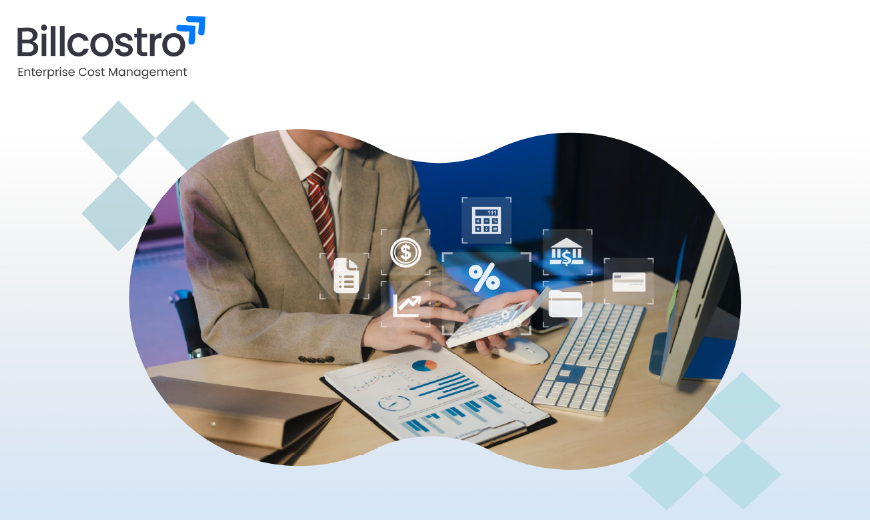
July 8, 2025, 4:59 a.m.

Digital tools fuel agility and scalability in today’s startup landscape—and that translates to SaaS (Software as a Service) everywhere. Many startups typically utilise multiple SaaS subscriptions to manage their daily operations. But, increased stack means increased spending.
That is where SaaS spend management comes in. It is a financial practice that enables startups to track, optimise, and manage their software subscription costs. It is more than just saving money; it is a strategic step towards sustainable growth and a strong financial position.
In this article, we’ll explain SaaS spend management as well as offer you nine expert-backed step-by-step ideas to help you navigate the business expenses more cleverly, by employing the right tactics and gadgets, for an early-stage startup.
SaaS spend management is basically the method of verifying, evaluating and regulating the expenses related to software subscriptions in an organization. It includes finding the active tools, monitoring usage, managing licenses in an optimal way, getting rid of unnecessary expenses and ensuring that software costs are in line with business requirements.
Although large corporations usually depend on enterprise expense management platforms, startups require flexible, user-friendly solutions that give them visibility and control without the need for additional resources.
Innovation with discipline represents the balanced journey of early-stage startups. Effective SaaS spend management is the key to success for the following reasons:
Preserves cash flow by cutting down on unnecessary software expenditures
Prevents tool sprawl by ridding of duplicate or unused tools
Improves forecasting by unifying recurring expenses
Enables best decisions by matching spend with business objectives
For startups working with tight budgets or backing from an investment management company, controlling SaaS spend helps build credibility and extend runway.
Here are practical, proven strategies your startup can implement immediately to manage and reduce SaaS costs effectively:
1. Conduct a Full SaaS Audit
First, document every tool your team is currently utilizing. List the tool names, costs (monthly or yearly), number of users, and the dates when you have to renew. This not only gives you a consolidated view of your tech stack but also helps in identifying pockets of redundancy or unused resources.
Pro Tip: To prevent manual errors and be more efficient, implement an expense tracking software or SaaS audit tool that will automatically do the work for you and save you from the hassle of using spreadsheets.
2. Centralize Subscription Ownership
Assign a single individual or team (typically from the finance or operations department) to manage all SaaS subscriptions. This not only prevents the ownership from being scattered but also ensures that every renewal, upgrade, or cancellation is done in a standardized way by a single process.
3. Eliminate Underused or Duplicate Tools
If multiple departments use different tools for the same purpose (e.g., project management or communication), consolidate them. Cancel licenses for inactive users or tools with low login activity.
Example: Switch from using three project management tools to one that fits all teams’ needs.
4. Set Clear Approval Workflows for New Tools
Avoid impulsive SaaS signups by setting up a lightweight approval process. Before a new subscription is approved, ask:
This prevents unnecessary or overlapping purchases.
5. Track Usage and Engagement Regularly
Tools that were once considered to be useful can become irrelevant in the course of time. Utilize built-in analytics or a third party to measure user behavior, feature adoption, and ROI on every tool.
If you have a platform where only 2 out of 10 users are active, think of reducing your plan or substituting the tool.
6. Leverage Annual Billing Discounts (Cautiously)
Most SaaS providers give special prices for plans with a year's duration, which may result in 10–30% savings. However, only go for an annual payment if it's for the software you have confirmed through continuous usage.
Don't get into long-term agreements for services that are still on your trial list
7. Negotiate Before You Renew
Don't merely rely on auto-renewal prices. Suppliers are typically willing to negotiate, particularly when it comes to start-ups in the initial phase or multi-user agreements. Provide them with your usage figures, refer to comparable companies, and ask for personalised rates.
Indicate that you are a developing enterprise or have a known investment management company as your supporters. It makes a difference.
8. Consolidate Billing and Reporting
Utilize business expense management tools that allow you to combine all software subscriptions into a single dashboard. Finance teams find it easier to track spending, handle renewals, and create reports when they do so.
Besides, when you expand, you can also link SaaS expenses with your general enterprise expense management system.
9. Create a Quarterly SaaS Review Cadence
Don’t wait for an annual budget check. Review your SaaS stack every quarter. Evaluate usage, renegotiate terms, and eliminate low-performing tools. This keeps your stack lean and aligned with business needs.
To implement these best practices effectively, it is advisable to deploy tools that provide these features:
A consolidated dashboard for all your SaaS spending
Usage insights and alerts for inactive users
Alerts for renewals
Planning and predicting
Automating the approval process
Tools like Billcostro are ideal for startups and finance teams at the early stage
Billcostro has evolved from being merely an expense management tool to a complete solution for handling requests, vendors, payments, and cost approvals in changing organisations. The following are some of how it facilitates SaaS cost control:
Enables IT and SaaS request automation through customizable workflows
Makes the renewal or subscription underuse more visible
Monitors SaaS spending at the department level
Sends email or SMS alerts in advance to prevent missed charges
Works with accounting software to enable the flow of data for reporting
Whether you're managing five tools or fifty, Billcostro brings clarity and control to your SaaS expenses—helping you build a cost-conscious culture from day one.
SaaS tools are essential for today's startups, and so is innovatively using them. As your company grows, it will also expand your software stack, and without a clear system in place, costs can spiral out of control quickly.
Given the right expense-tracking software, a solid SaaS spend management strategy can greatly boost your startup’s financial condition, triple the visibility, and still keep the burn rate under control.
Looking to take control of your SaaS spend? Start your 30-day trial with Billcostro and simplify your expense management today - Click here